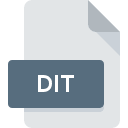.DIT File Extension

Active Directory Information Tree File
| Developer | Microsoft |
| Popularity | |
| Category | System Files |
| Format | .DIT |
| Cross Platform | Update Soon |
What is an DIT file?
The .DIT file extension stands for “Directory Information Tree” file, a crucial component within the Microsoft Active Directory (AD) framework.
These files are integral to the management and organization of user data and network resources in a Windows-based network environment.
The .DIT file is used to store hierarchical data about network objects such as users, computers, groups, and organizational units. It plays a fundamental role in the functionality and efficiency of Active Directory services.
More Information.
Active Directory was first introduced with Windows 2000 Server and has been a core component of Microsoft’s server operating systems since then.
The .DIT file format was developed to address the need for a robust, scalable directory service that could manage complex network environments.
Its primary purpose is to store the directory information in a way that supports fast access and efficient management of network resources.
Over time, Active Directory has evolved, with newer versions improving on the original design. However, the .DIT file format has remained a fundamental part of the Active Directory infrastructure, adapting to changes and enhancements in the technology.
Origin Of This File.
The .DIT file format originated with the introduction of Active Directory in Windows 2000. Active Directory was designed to centralize and manage network resources, providing a scalable and flexible directory service for large networks.
The .DIT file format was created to facilitate the storage and retrieval of directory data in a structured manner.
It leverages the Extensible Storage Engine (ESE), a database engine used by Microsoft, to handle the complex data storage needs of directory services.
File Structure Technical Specification.
The .DIT file is essentially a database file used by Active Directory to store the directory data. It is managed by the Extensible Storage Engine (ESE), which is a Microsoft database engine. Here’s a closer look at its structure and technical specifications:
- Format: The .DIT file uses a proprietary binary format optimized for performance and reliability. The data is organized in a hierarchical manner, reflecting the structure of the Active Directory.
- Data Storage: The file stores information about objects in the directory, such as user accounts, groups, computers, and organizational units. This includes attributes, relationships, and permissions associated with each object.
- Indexing: The ESE provides indexing capabilities to ensure efficient querying and retrieval of data. Indexes are used to speed up search operations and improve performance.
- Replication: In multi-domain controller environments, .DIT files are replicated across servers to ensure consistency and availability of directory information. The replication process ensures that all domain controllers have up-to-date data.
- Transaction Logging: The .DIT file is accompanied by transaction log files that track changes made to the directory. These logs are crucial for maintaining data integrity and for recovery in case of system failures.
How to Convert the File?
Direct conversion of .DIT files is not typically required or recommended because these files are integral to the functioning of Active Directory. If you need to work with data from a .DIT file outside of Active Directory, you can use the following methods:
- Exporting Data: You can export data from Active Directory to more accessible formats, such as CSV or LDIF, using tools like
ldifdeorcsvde. This approach allows you to work with directory data in a different format without modifying the .DIT file itself. - Database Utilities: Some third-party utilities and tools are designed to extract and convert data from .DIT files for specific purposes. These tools can be used with caution, ensuring compatibility with your Active Directory version and configuration.
Advantages And Disadvantages.
Advantages:
- Efficient Data Management: The hierarchical structure of the .DIT file allows for efficient management and retrieval of directory information. This is essential for large networks with numerous objects.
- Scalability: The .DIT file format supports the scalability of Active Directory, accommodating growing amounts of data and an increasing number of objects.
- Reliability: The use of transaction logs and replication ensures that data is consistent and reliable across all domain controllers, minimizing the risk of data loss.
- Performance: Indexing and optimized data storage contribute to the high performance of directory operations, such as searching and querying.
Disadvantages:
- Complexity: The proprietary format and the use of ESE can make it difficult for administrators to directly interact with or modify the .DIT file outside of Active Directory tools.
- File Size: In large environments, .DIT files can become quite large, potentially impacting performance and requiring substantial storage resources.
- Recovery and Repair: While transaction logs and replication provide data protection, repairing or recovering from file corruption can be complex and may require specialized tools or procedures.
How to Open DIT?
Open In Windows
- LDAP Tools: On Windows, tools such as the Active Directory Users and Computers (ADUC) snap-in or third-party LDAP management tools can be used to view and manage directory information stored in .DIT files.
- Custom Applications: Some custom applications or utilities may be available for handling .DIT files, particularly if they are associated with specific directory services.
Open In Linux
- LDAP Utilities: On Linux, LDAP utilities such as
ldapsearchorphpldapadmincan be used to interact with .DIT files in LDAP-based directory services. - Custom Tools: Custom tools or scripts may be used to process and view .DIT file data, depending on the specific directory service and format.
Open In MAC
- Directory Service Clients: macOS users may use directory service clients that support LDAP or other directory protocols to access and manage .DIT files.
- Cross-Platform Tools: Cross-platform directory management tools that support .DIT files may also be available for macOS users.











